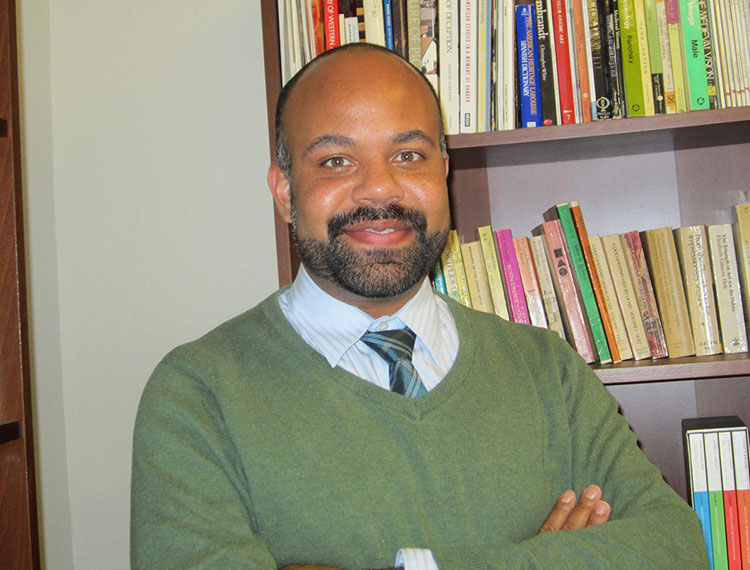
Tobias Wofford: Studying Africa in African American Art, Smithsonian Style
When Assistant Professor of Art and Art History Tobias Wofford first started high school, he dreamed of becoming an ESL instructor for Spanish-speaking students. But when he discovered art history – and learned he could make a career out of it – he immediately fell in love with the discipline.
“I remember it so vividly,” he recalls. “It just absorbed me. I really found myself through art history. I realized this wonderful way to ground and tell history through art that is very magical—to tell histories that aren’t necessarily in textbooks because there’s an experiential method to it.”
This passion has since taken him to Washington D.C. for a fellowship with the Smithsonian American Art Museum in support of his book project, Visualizing Diaspora: Africa in African American Art. For the past academic year, Wofford has been researching African American artists from the 1960s through the present and exploring how their works fit into Africa and the larger black world.
“By honing in on the ways the artists invoke Africa in contemporary African American art, I’m able to explore the complex relationships they have with the continent,” he says. Broken into five chapters, the project covers black American connections to the region, examining how artists use Africa to address the historical trauma of the slave trade as well as create new multinational identities.
“Each of the artworks that I analyze tells a very different story,” he says. “Collectively, they explain what it means to be black in the U.S. and the ways in which Africa plays a role in black identity.”
During Wofford’s fellowship at the Smithsonian, he didn’t expect to work alongside scholars researching all different aspects of American art, but that’s just what happened. “We became a part of a multigenerational community of scholars rooted in American art,” he says. “Simply put, the element of this scholarly community has been wonderfully fulfilling.”
Now back at SCU, he’s looking forward to re-entering the classroom having a new relationship with the work. “Sometimes, you need a break from teaching to understand what you’ve been missing in the ‘doing,’ and this fellowship has definitely been an experience where I’ve had an opportunity to reflect on my teaching practice,” he says. “I’m excited to encourage more opportunities like this for my students.”